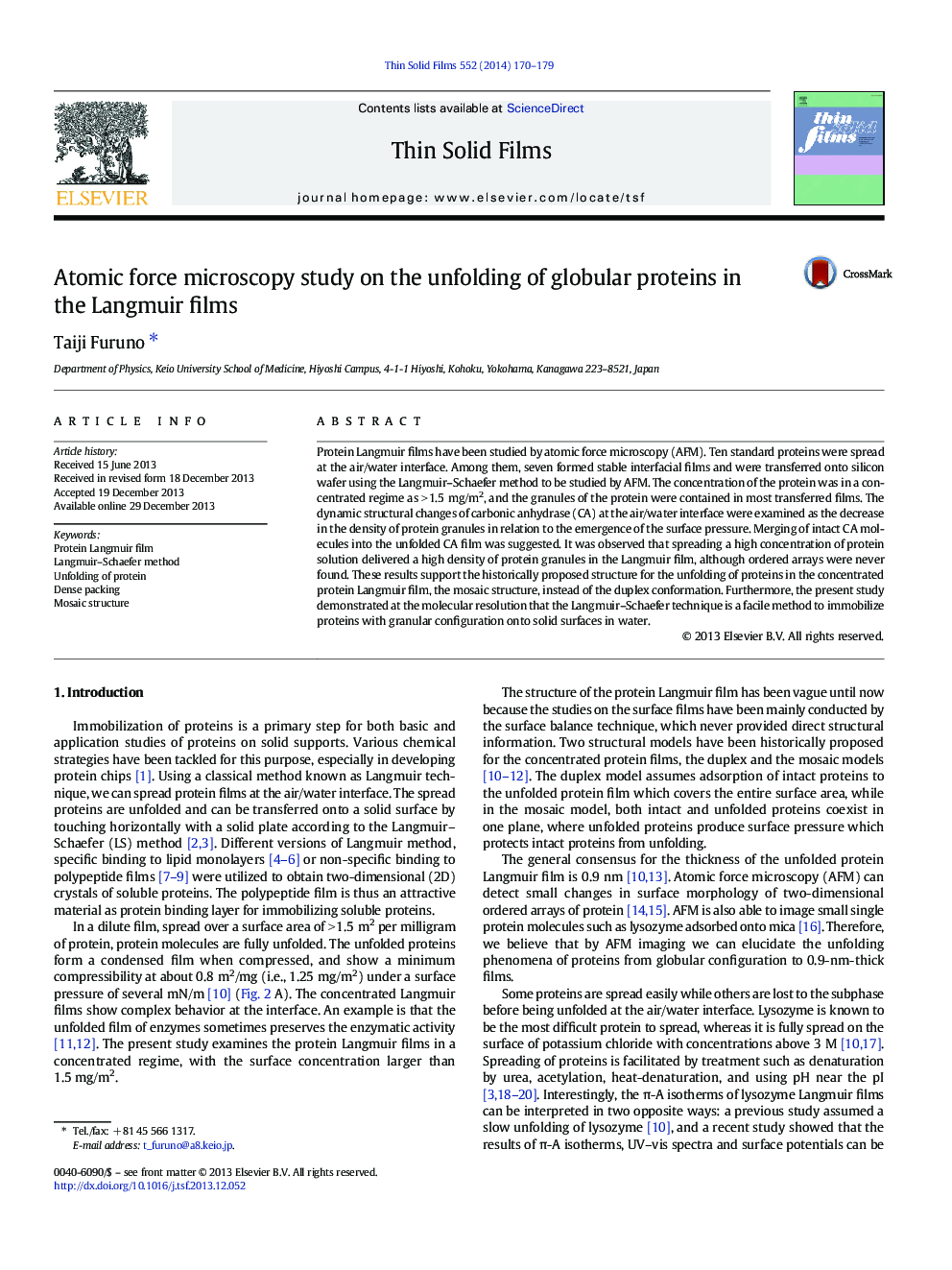| Article ID | Journal | Published Year | Pages | File Type |
|---|---|---|---|---|
| 1665703 | Thin Solid Films | 2014 | 10 Pages |
•Packing of globular proteins in the Langmuir–Schaefer films was imaged by AFM.•Unfolding of proteins at the air/water interface was suggested by real-space imaging.•Mosaic structure seemed plausible for the concentrated protein Langmuir films.
Protein Langmuir films have been studied by atomic force microscopy (AFM). Ten standard proteins were spread at the air/water interface. Among them, seven formed stable interfacial films and were transferred onto silicon wafer using the Langmuir–Schaefer method to be studied by AFM. The concentration of the protein was in a concentrated regime as > 1.5 mg/m2, and the granules of the protein were contained in most transferred films. The dynamic structural changes of carbonic anhydrase (CA) at the air/water interface were examined as the decrease in the density of protein granules in relation to the emergence of the surface pressure. Merging of intact CA molecules into the unfolded CA film was suggested. It was observed that spreading a high concentration of protein solution delivered a high density of protein granules in the Langmuir film, although ordered arrays were never found. These results support the historically proposed structure for the unfolding of proteins in the concentrated protein Langmuir film, the mosaic structure, instead of the duplex conformation. Furthermore, the present study demonstrated at the molecular resolution that the Langmuir–Schaefer technique is a facile method to immobilize proteins with granular configuration onto solid surfaces in water.
